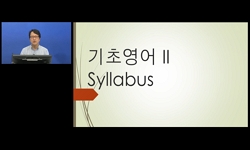The past perfect tense poses an enormous difficulty for English as Foreign Language (EFL) learners. Not only is this due to linguistical background, but also due to the complex structure of having to understand the past auxiliary verb first and then t...
http://chineseinput.net/에서 pinyin(병음)방식으로 중국어를 변환할 수 있습니다.
변환된 중국어를 복사하여 사용하시면 됩니다.
- 中文 을 입력하시려면 zhongwen을 입력하시고 space를누르시면됩니다.
- 北京 을 입력하시려면 beijing을 입력하시고 space를 누르시면 됩니다.

Translating Past Perfect: An Effective Way to Teach EFL Learners = Translating Past Perfect; An Effective Way to Teach EFL Learners
한글로보기https://www.riss.kr/link?id=A106310745
- 저자
- 발행기관
- 학술지명
- 권호사항
-
발행연도
2019
-
작성언어
-
-
주제어
Past perfect ; pluperfect ; 과거 완료 ; past simple ; 과거시제 ; translated writing ; 번역식 작문
-
KDC
747
-
등재정보
KCI등재
-
자료형태
학술저널
-
수록면
41-63(23쪽)
- 제공처
-
0
상세조회 -
0
다운로드
부가정보
다국어 초록 (Multilingual Abstract)

The past perfect tense poses an enormous difficulty for English as Foreign Language (EFL) learners. Not only is this due to linguistical background, but also due to the complex structure of having to understand the past auxiliary verb first and then to add the correct form of past participles. Even so, unlike present perfect where profound researchers have been conducted to apply various pedagogical implications in teaching, past perfect is often taught by grammar drill exercises and at times even lacks the opportunity to use in full sentences. This paper aimed to find out whether use of full sentences in translated method could be more effective than the usual grammar drills in EFL settings. Both the qualitative and quantitative results show that for the mid and low proficiency group, prepositional time phrase at the end of the sentences helped them understand the sequence of the events and to successfully apply past perfect in their translations. This shows that to better teach past prefect to the mid to low group of students, first, time signaling phrases should be added to the translated writing sentences and then, sentences without such phrases should be given for the students to conceptually understand the sequences.
목차 (Table of Contents)
- I. INTRODUCTION II. METHOD III. RESULTS AND DISCUSSIONS IV. Conclusion and Further Studies
- I. INTRODUCTION II. METHOD III. RESULTS AND DISCUSSIONS IV. Conclusion and Further Studies
동일학술지(권/호) 다른 논문
-
영상번역 교육 개념의 범주에 대한 재조명 -AI 출현(2017년) 전·후(前·後)를 중심으로-
- 한국통번역교육학회
- 김동미(Kim, Dong Mie)
- 2019
- KCI등재
-
A Study on Korean College Students’ Awareness in the Passive Voice
- 한국통번역교육학회
- Ma
- 2019
- KCI등재
-
- 한국통번역교육학회
- 양은정(Yang, Eunjung)
- 2019
- KCI등재
-
문학작품의 개인방언 번역 전략 연구 ―『피그말리온』을 중심으로
- 한국통번역교육학회
- 진실로(Chin, Silo)
- 2019
- KCI등재




 스콜라
스콜라




